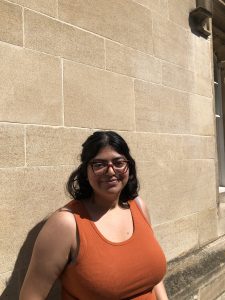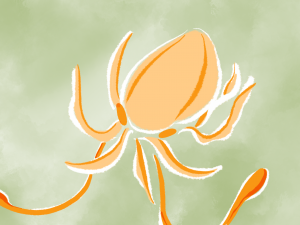
Short Poems
by Michael Delgado | October 23, 2017
Amongst the sprawling fragments of prose and poetry which make up William Carlos Williams’ Spring and All (1923) lies the following:
so much depends
upon
a red wheel
barrow
glazed with rain
water
beside the white
chickens
Everything about the presentation of these lines is unassuming. There is no punctuation, nothing is capitalised, and there is no title but the number XXII. The poem is made up of just sixteen short words, but it is one of Williams’ best known and most alluring pieces.
The very first couplet points to an unspecified significance: there is something at stake here, and yet Williams chooses not to tell us what it is. Or maybe he doesn’t know. This is a fleeting impression, a momentary image which masks larger concerns. The stark and lucid image of the wheelbarrow coupled with the more beguiling opening generates an uncomfortable conflict between certainty and uncertainty. What exactly depends on this wheelbarrow, and why is it the subject of this transitory poem?
These questions — about the function of poetry, the roles of the poet and the reader in the act of digesting poetry — are hardly new. Nor are short forms. John Milton wrote two poems in the space of a year which exemplify this. In his great poem Lycidas, written after the death of his friend and fellow Cambridge student Edward King in 1638, he muses on his own poetic career, as he struggles to invoke his muse, before concluding with a suggestion of new poetic possibilities: ‘pastures new’.
In the Everyman edition of Milton’s English poems, the 200-line Lycidas is followed by a couplet written by the poet in the same year, reportedly scrawled on the back of a letter he had received from his friend Henry Lawes.
Fix here ye overdated spheres
That wing the restless foot of time.
Both poems, though starkly different in length and form, ask similar questions in dissimilar ways. Lycidas questions the efficacy of poetry and the poet through its content; Fix Here — by being so unconventional in length and composition — does the same through its very form.
Although short poems do not exclusively belong to the twenty-first century, they seem increasingly relevant in a society where speed and efficiency are valued. The internet is a perfect example. Vines limit video lengths to just six seconds; Buzzfeed-style ‘listicles’ focus on creating easily digestible journalism which requires minimal effort to consume; even fingerprint recognition on iPhones gives us back valuable seconds we would otherwise have spent typing in a clumsy and inefficient password.
In this climate, longer literary forms feel increasingly out of place. That is not to say that modern capitalism has somehow killed poetry; just that reading a long poem today feels more of an escape from the normal routine of our society than part of it.
There is ostensibly nothing wrong with escapism, but the danger is that poetry eventually becomes an anachronism, squeezed out of our progressively busier schedules. While great long poems like Paradise Lost should of course be valued and protected today, exploring the power of short forms might be one way of ensuring that poetry remains part of society rather than detached from it.
Of course, how we distribute poetry is also key. In recent years many poets have been using Twitter as a platform for short poems. Benjamin Zephaniah and George Szirtes are two of the most high-profile poets who have taken to this new technique. Judith Palmer, director of the Poetry Society, has diagnosed this interest in Twitter’s poetic capabilities: “[Twitter poems] can reach a wide audience in moments, but they’re also ephemeral”.
It is that dual state of being both widely read and fleeting which makes Twitter poetry so suited to modern life. Someone scrolling down their Twitter feed might chance upon a Benjamin Zephaniah couplet, take a few moments to read it and digest it, and then move on. If that poem has in some way resonated, then it will stick in the reader’s mind, and poetry will have started to become a natural part of that person’s day.
The project ‘Poems on the Underground’ works in a similar way; aiming to integrate poetry into the mundanity of quotidian life. Launched in 1986 by the American writer Judith Chernaik, ‘Poems on the Underground’ replaces adverts on tube carriages with poetry, aiming to brighten the commute. As easily as this, poetry can be injected into the modern daily routine.
The Modernist poet Ezra Pound was in many ways one of the most elitist, complex, and elusive poets to read, and yet his short form Imagist poems seem to have a distinctly accessible, even democratic impulse. Imagism was a poetic school started in around 1911, and spearheaded by Pound, along with his friends Hilda Doolittle (who went by the name H.D.) and Richard Aldington. Although the Imagist ‘period’ formally lasted only a few years, its influences are everywhere in twentieth and twenty-first century poetry. The key tenets of Imagism were about describing an object in the most direct way possible, and being as succinct as possible: using no superfluous word. Pound’s purest example of Imagism is entitled In a Station of the Metro:
The apparition of these faces in the crowd;
Petals on a wet, black bough
This poem is remarkably easy to understand. Where his Cantos are brimming with untranslated Greek and Sanskrit and obscure cultural references, this image is a simple one: ephemeral yet concrete. You don’t have to know anything about poetry to understand the concept of the speaker seeing faces in a crowd and likening them to petals.
Short poems can often be more powerful than long ones. They constitute two very different experiences. When reading a long poem, you become sucked into its imaginative world for a sustained period, and it requires persistence. Without downplaying longer forms, pioneers of short poems — Pound, Dickinson, Williams — seem to have anticipated poetry’s modern predicament.
Illustration by Suzy Vanezis




